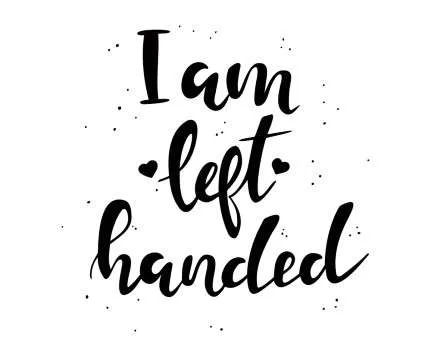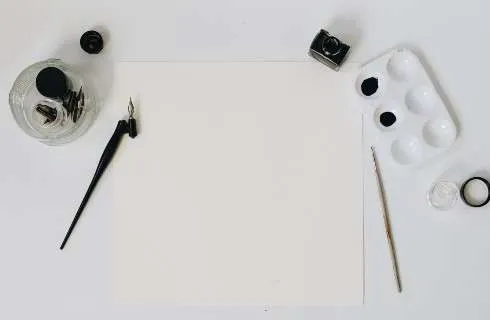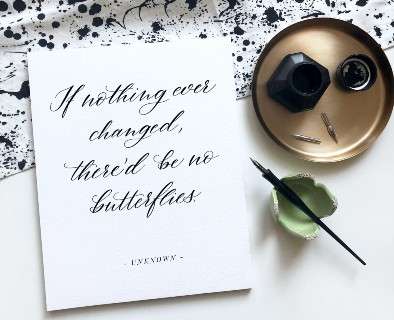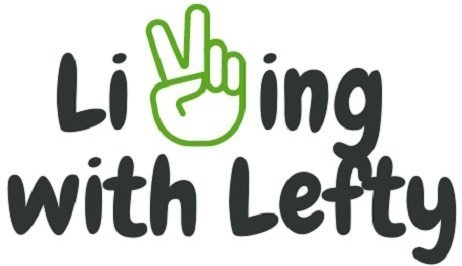Doing calligraphy with your right hand should be the same as how a left-hander would do it with their left, right? Not really. While the output could be as spectacular as a right-hander, left-handed people are put through a wringer of frustrating situations when writing with all types of calligraphy pens and brushes usually made for right-handed people. In this article, we will show you how to learn calligraphy left handed and discover some interesting left handed calligraphy tips along the way.
Table of Contents
Can Lefties Do Calligraphy?
Of course, lefties can do calligraphy! However, when you delve deeper into the art of calligraphy, much of the information available through most media is aimed at a right-handed audience.
For example, most calligraphy pen sets are manufactured to comfortably suit the right-handed, but unfortunately, there are very few companies manufacturing left-handed calligraphy pens. This isn’t a surprise, as only about 10% of the world’s population is left-handed, and exposure to the difficulties they face as they write is minimal.
Lefties are also forced to figure out their own ways to write due to a lack of tutorials aimed toward potential lefty calligraphers. Not being able to find appropriate tutorials could also potentially discourage a lefty from trying calligraphy altogether.
Is Calligraphy Harder for Lefties?

In short, yes, calligraphy is harder for lefties. But it all eventually comes down to adapting and finding your own way to do it. Writing with your left hand in a mostly right-handed world has its challenges.
Many pens are only suitable for the right-handed. If you’re a lefty, then you could be discouraged from getting into calligraphy because most pens won’t conform to your choice of grip. Regular brush pens may get frayed at the tips due to excess pressure applied when doing certain strokes at a particular angle. For the right-handed, their natural hand posture (mostly underwriting) may provide them the accurate angle when doing calligraphy, whereas a lefty may need to adapt with the angle of the tip by changing their writing position accordingly.
Writing from left to right for a lefty usually causes smudging. For right-handers, this isn’t an issue as their hand is toward the right of the letters. But for lefties, it’s the opposite, and as your hand touches the paper and moves across the page, the ink may get smudged. This is especially common with side and over-writers. An easy solution is to slant your paper about 45 degrees to the right, so your hand won’t be dragged over freshly written words.
When beginning calligraphy, a lefty may struggle with the spacing of words and even letters, as their hand blocks the already written words. However, this is an issue that one can overcome with a lot of practice.
There are more challenges lefties may face. Vance Studley’s “Left-Handed Calligraphy” is a good book to understand and find proven methods in doing left handed calligraphy, particularly for beginners.
What Are the Different Types of Calligraphy Pens?

The types of pens calligraphers use define the writing quality and consistency as much as their experience with writing. A left-hander could use a regular ballpoint pen to do calligraphy or even lettering. It even has smudge-resistant and quick-drying ink, a positive for left handed calligraphers. But the end product won’t look and feel nearly as delicate or versatile, where there’s a variance in the thickness of strokes, as when you use the traditional and appropriate instruments for calligraphy.
Using a fountain pen for lefties, which contains an ink cartridge, will give you a good introduction to creating calligraphy. If you don’t have normal writing experience with a fountain pen, then learn how a left-hander can write with a fountain pen first. But most fountain pens don’t come with interchangeable nibs for different types of strokes, nor have flexible nibs like dip pens do. The standard shape of the barrel of a fountain pen may not be comfortable enough for a lefty’s hold.
The tines of the nib of a cartridge pen are designed to open with a restrained pressure of being pulled, which is fine for right-handers. Whereas, lefties naturally push toward the paper and move forward when writing, causing roughness on the paper and uneven amounts of ink feeding onto the paper.
Actual pens meant specifically for calligraphy like the dip or brush pen, with their respective nibs and particular barrels, will allow you to be more accurate to traditional writing styles and allow for more variety of strokes, thick or thin. Some will be much better suited to left-handers than others, as they can also cause some of the same issues as fountain pens do.
The following list of pens and nibs will give you an understanding of what you would need for calligraphy. Once you have a good understanding of them, head on to our curated list of best calligraphy pens and tools for left-handers.
Brush Pens
This is an ink pen with a fibrous bristle-tipped end, imitating a brush. Unlike a regular brush, ink is fed to the tip by an ink feeder just like inside a fountain pen or other calligraphy pens. This is a very commonly used pen for calligraphy and is highly recommended when creating left-handed calligraphy for beginners.

Pros:
- Suitable for beginners, as it has a very flexible, easily usable tip for multiple stroke types.
- A good precursor to dip pens because it teaches you basic pressure control. This is particularly helpful to lefties, who generally apply more pressure when writing.
- They come in a variety of sizes, including a large brush tip ideal for greeting card titles and signs.
- Easy to maneuver on any paper no matter your type of grip.
Cons:
- Even the smallest tip size available isn’t very suitable for thin-stroked, delicate calligraphy.
- For thin upstrokes, you would need to reduce your stroke pressure to the bare minimum, which can be challenging.
Dip Pens
A dip pen has no internal ink reservoir and instead requires you to dip and collect ink from an ink bottle into a tiny ink well at the back of the nib. Dip pens have a wide variety of nibs and are often the go-to pens for advanced calligraphers.
Pros:
- The body of a dip pen can vary in material and shape, as there are many types available, such as a wooden body, glass body, plastic, etc, whereas fountain or brush pens don’t usually have this variety. This gives lefties more options to find their comfortable grips.
- Dip pen nibs are more sensitive to variations of pressure and speed compared to other types of pens, and therefore, can produce cleaner lines when transiting from thick to thin strokes and vice versa.
- Changing the ink for dip pens is much simpler than with fountain pens or others.
- All parts included, dip pens are cheaper than most others.
Cons:
- Dip pens require many materials to do calligraphy, such as multiple nibs, pen-holders, separate ink bottles, alcohol or damp clean cloth to clean the nibs, and particularly smooth paper.
- Hard to control for beginners. It may feel scratchy on paper without the right amount of pressure sensitivity.
- Need to collect ink frequently while writing.
- The ink does not dry quickly and may smudge for lefties if the underwriting position is not used.
Dip pens have 2 types of nibs, each with its specific use:
Broad Edge or Italic Nibs
Broad edge nibs are used to write particular styles of calligraphy such as the Roman, Italic, Foundational, and Blackletter styles among others. This nib gives a line width of about 1.0mm and is generally used for large lettering and signatures.
For lefties, this nib is not ideal because the tip is grounded straight or slanted for right-handers and would require you to find the correct angle to hold the pen consistently to achieve stroke variation. Fortunately, we now do have a few broad edge nibs that are ground at a slant for lefties.
If an italic nib is also on the more rigid side, it’s more difficult to create stroke variation, especially for lefties. This is because regulating pressure easily won’t come automatically for beginners without possibly scratching the page. More flexible nibs are better for lefties to use, or pointed tip nibs.
Pointed Tip Nibs
The tines of a pointed tip nib are long and flexible which allows for more variation of thin and thick strokes. This sets it apart from an italic nib’s short, less-flexible tines. A pointed tip nib can be used by a straight or oblique pen holder, but a straight holder is suited for lefties. A left-handed oblique calligraphy pen holder can also be used with a pointed tip nib. However, these are hard to find nowadays.
How to Learn Calligraphy Left Handed – Tips and Tricks
If you want a little more confidence before you get down to trying calligraphy or have been facing some challenges, these following tips will help you in your calligraphy journey.
Get the Right Pen

A lefty should be comfortable using a straight nib holder for pointed pens, which provides the right angle for the nib tip if you want to get a slight slant to the right. A left oblique nib holder may be needed for writing straight, but since they are difficult to find, you would have to achieve this by tilting the paper a little to the left.
A rough or rubberized barrel is ideal for a lefty’s grip to stay in position instead of sliding down as they push forward when writing.
Paper Position
For a comfortable position for a lefty, the paper should be tilted to the left by 35-45 degrees when using a pointed pen. It should be kept straight or slightly tilted to the right when using a brush pen.
Pen Grip
When gripping any pen, lefties should not write with a tight grip as most naturally do. Writing with a tight grip can damage a pen’s nib. It should be gripped as per your comfort, but the pressure needs to be regulated as per the nib’s requirements such as with a sensitive nib like the pointed tip nib, and for achieving stroke thickness variation.
Get the Writing Angle Right
When using a dip pen, underwriting (hand under the baseline) is the best writing angle for a good posture for lefties, and is particularly beneficial to achieve a proper angle without smearing the ink, unlike side-writing. The hand is generally tilted to the left when writing.
Overwriting (hand above the baseline in a hook position), a very common position for lefties, is also used to avoid major smudging of ink and to gain a writing position that matches the right-handed position. This is normally an inefficient way to write for lefties, as it cuts endurance short due to bad posture and makes writing feel scratchy, especially if using a dip pen.
However, since brush pen tips are smooth and less resistant to being pushed into the paper, many lefties may find over-writing a good way to overcome calligraphy challenges without altering their writing style.
When doing specific writing styles such as italics, the tip should be angled 45 degrees to the left when writing to get the right thick and thin strokes. A left oblique nib may be required for a lefty for this style but some left-handers find that a straight nib holder works better for them.
Practice First With Different Strokes
Generally, the amount of pressure you put on your nib when doing upstrokes should be less, for a smooth and thin line. When coming down for a stroke, apply more pressure for thickness. For dip pens, more pressure on the paper would be required when doing thicker lines.
Then Practice With Large Lettering
Practice the letter “L” in cursive continuously (loop-like) on lined paper to get the right thickness for the strokes. Write them large, extending from the bottom line to the top. Then continue with all the letters of the alphabet several times before you start practicing with words.
FAQs
Can I do calligraphy if I’m left-handed?
Of course, you can! But there are challenges to overcome, like finding the right pen, writing position, and the right pen grip. With practice, there won’t be any difficulty.
Do left-handed people need special calligraphy pens?
When a lefty requires an oblique pen, they would need to use a special left oblique pen. However, many prefer to use a straight pen. Lefties may also require a particular pen barrel to suit their unique pen grip for better comfort. There are also certain brands that make good pointed tip brush pens that are better suited for left-handed calligraphy.
How does a left-handed person hold a calligraphy pen?
Pen hold positions for lefties may vary. Many grip their pens using all their fingers because they use more force when writing, as they have to “push forward” rather than “pull away” while writing. Many also tend to grip it very close to the tip instead of further up the barrel.
The best way for left-handers to hold a calligraphy pen is with an underwriter grip if using a dip pen but an overwrite grip is fine if using a brush pen.
Can left-handed people use dip pens?
Left-handers can use dip pens to do calligraphy. However, they would need the underwriter hand position to avoid smudging the ink on the paper or feeling scratchy as they write.
Why are calligraphy pens offset?
Oblique calligraphy pens are offset to help the writer create calligraphy that requires writing with a right-leaning slant, which is difficult to do with a straight pen. This helps with creating better-angled strokes, accurate to vintage writing styles. Left-handers would need a left oblique nib holder or a straight nib holder to achieve the same.
